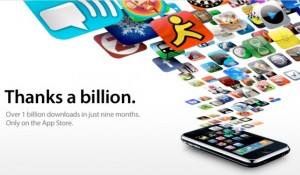
When Google’s proposed acquisition of Motorola Mobility was announced in 2011, the business press focused mainly on the extension of Google’s core business from Internet search into hardware. But from a legal perspective, the treatment given the deal by competition authorities in the United States, the EU and China raises intriguing questions about the scope and objectives of merger policy in emerging technology markets.
The acquisition represents a classic case of downstream vertical integration into complementary markets. Since Google’s aborted launch of its own “Nexus One” smartphone in 2010, Google’s presence in the wireless handset and other hardware markets has been minimal. Merger reviews typically focus on horizontal concentration in a relevant product market; namely, to evaluate the risk that an increase of concentration post-transaction may produce a rise in prices or other so-called “coordinated effects.” There has been virtual unanimity among antitrust scholars and enforcement authorities for several decades that vertical integration typically presents little or no antitrust risk.
That is a principal result of the Chicago School antitrust revolution, ushered into American antitrust law and policy by GTE Sylvania in 1977. Under this approach, vertical restrictions and other relationships between manufacturers, distributors and retailers are presumptively procompetitive by increasing incentives for interbrand competition. Although technically classified as a “rule of reason” analysis, in reality the leniency of American antitrust law to vertical restraints has been such that there are almost no significant examples (with a few exceptions, like the Microsoft monopolization case of 1998-2000) of vertical restraints or mergers being judged to violate the Clayton Act or the Sherman Act.
So it should come as little surprise, therefore, that from an antitrust perspective Google’s proposal to acquire Motorola Mobility raised very few eyebrows. Yet just weeks ago it was announced that Google had received final approval to close the deal from the new China Competition Authority (the Ministry of Commerce, Anti-Monopoly Bureau ), contingent on one important concession. The Chinese required that Google pledge to maintain its Android operating system (OS) on a free basis for all wireless device manufacturers for the next five years.
The evident competition concern here is behavioral, not structural. That is, there is no risk that post-merger, Google’s share of either its own markets or Motorola’s markets will exacerbate coordinated affects or give it enhanced unilateral market power. To the contrary, the competitive risk potentially feared by antitrust regulators or competitors is that once it has a presence in wireless device manufacturing, Google might favor its own financial and competitive interests downstream by beginning to charge device manufacturing rivals for the Android OS.
This presents two provocative issues. First, should merger enforcement policy be grounded in a prediction of the post-transaction business incentives of the merging parties? While merger analysis must necessarily be based on a prediction of future effects, projecting the future business behavior of any one firm is far more problematic and unreliable than the kind of structural market analysis informed by HHI and oligopoly economics. And in most if not all antitrust regimes, even if the merger itself is accorded clearance by competition authorities, governments and competitors still have the opportunity to challenge actual post-merger conduct as a violation of the antitrust laws. Especially in rapidly changing technology markets — of which wireless handsets are undoubtedly a leading example — the risk of error in basing merger policy on predictions of future business behavior seems rather high.
The second issue raised by Chinese approval of the Google-Motorola deal is whether antitrust enforcers can or should dictate price. Typically, it is assumed that antitrust policy relies upon marketplace competition to produce the most efficient allocation of resources and “correct” pricing. Even in per se illegal price-fixing cases, the government never independently decides what the “right” price should be, but rather steps in to redress cartels or other restraints that limit the ability of market forces to set price based upon supply and demand.
“Open source” software, however, seems to be an emerging exception to that settled rule. In Oracle’s 2009 acquisition of Sun Microsystems, competitive concerns were raised about whether Oracle might begin charging for Sun’s open source mySQL database software. In Google’s 2010 acquisition of ITA, a travel software developer, the U.S. Justice Department required as part of a consent decree settlement that Google agree to maintain ITA pricing to travel service rivals and to continue R&D for the software itself. While ITA represents proprietary, paid software, the same vertical pricing concerns animated the government’s response to that deal as well.
But who is to decide whether an OS, or any other software, must or should be offered for free? The business model case for open source — dating back to that pioneered by Netscape in the late 1990s, where the Web upstart offered its browsing software for free in order to capture share and profits from the sale of server software — has been that companies offer free products in order to monetize their investment at another level (typically upstream) of the distribution chain. Economics would therefore teach that, if as seems correct, Google could make more money from handset profits than licenses for its Android OS, its rational business incentives would be to maintain Android as a free, open source product.
There’s still a big difference between legacy command-and-control economies like China, despite its recent liberalizations, and the market-oriented economy of the United States. Yet with increasing globalization these sorts of conflicting world views are likely to become more prominent. Whether the OS wants to be free could become less important than whether some government or enforcement agency – probably not in the U.S., one hopes – makes it their job to supplant the marketplace and dictate the answer.
Note: Originally written for my law firm’s Information Intersection blog.

 When the iPod and iPhone proved to be winners, big ones, Apple’s financial fortunes turned around dramatically. iTunes now is the largest digital music retailer, accounting for some 60% of all downloads, and the various iPhones are the most popular smartphones globally. Apple’s annual revenues soared from $5 billion in 2001 to $108 billion last year. But what short memories we have. The plaintiffs’ antitrust bar accuses Apple of unlawfully monopolizing these markets and has filed a series of sometimes confusing consumer class actions challenging Apple’s vertical integration and closed product systems. (Nine separate lawsuits have been unified into one action in California focusing on the tight grip Apple exerts on the iPhone’s services and applications; other individual and class suits are pending elsewhere.) The EU reportedly has investigated Apple’s App Store restrictions, and more recently its deals with European wireless carriers, to determine whether the company “abused” a “dominant position.”
When the iPod and iPhone proved to be winners, big ones, Apple’s financial fortunes turned around dramatically. iTunes now is the largest digital music retailer, accounting for some 60% of all downloads, and the various iPhones are the most popular smartphones globally. Apple’s annual revenues soared from $5 billion in 2001 to $108 billion last year. But what short memories we have. The plaintiffs’ antitrust bar accuses Apple of unlawfully monopolizing these markets and has filed a series of sometimes confusing consumer class actions challenging Apple’s vertical integration and closed product systems. (Nine separate lawsuits have been unified into one action in California focusing on the tight grip Apple exerts on the iPhone’s services and applications; other individual and class suits are pending elsewhere.) The EU reportedly has investigated Apple’s App Store restrictions, and more recently its deals with European wireless carriers, to determine whether the company “abused” a “dominant position.”

